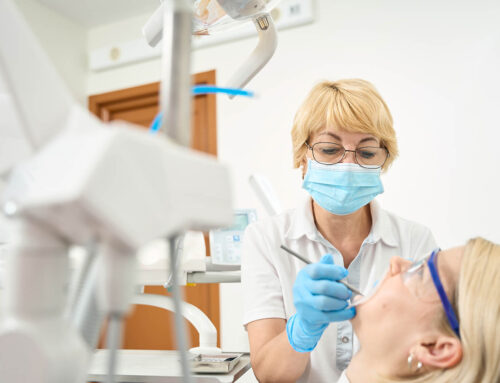By Dr Saul Konviser
Why whiten your teeth?
Very few patients are still after that ‘Love Island’ appearance or ‘toilet-bowl white’ effect as I like to call it. Almost every patient I now see simply wants to ‘lift the colour’ of their teeth and make them look naturally healthy and fresh again. But what is tooth whitening, why would it be right for you and how do you do it?
What is it?
Tooth whitening is one of the safest, least invasive and most affordable ways to enhance your smile. However it is important to clarify form the start that when people talk about tooth whitening, what they really mean in bleaching, using a product called Hydrogen Peroxide or Carbamide Peroxide – both of which by law, can only be prescribed by a dentist. This is why anybody else offering tooth ‘whitening’ is really misleading customers as they will never achieve the same results as that of bleaching by a dentist. In fact, as mentioned later in this article, some of those over the counter products, could actually be causing more harm to your teeth than good.
First it is important to understand why your teeth have discoloured in the first place.
What causes stained teeth?
Teeth can appear yellow or discoloured due to external sources such as food and drink products. Ingredients such as turmeric are well known to cause yellow stained teeth, although many food and drinks are able to cause general discolouration such as tea, coffee, red wine, beetroot or even blueberries. Smoking is the other very obvious one that causes teeth to turn yellow however with the growth of vapes and decrease in tobacco use, this problem may have slightly reduced.
Another cause for teeth to appear yellow is age. As the enamel gets thinner from wear and tear, the underlying yellow dentine can become more visible and so yellow teeth is often associated with ageing.
People who clench and grind their teeth, or suffer from acid reflux often have front teeth that can have blue on the edges as the back of the teeth has been worn away. This gives the teeth a blue translucent appearance. In such cases, the teeth would likely need a filling to replace the tooth structure first and then further treatment using tooth whitening is possible.
In some instances, there are certain medications or health disorders that can cause discolouration such as yellow, grey or brown staining of the teeth although this tends to be something that is picked up in childhood or when the adult teeth first begin to erupt.
Other causes of staining or discolouration of the teeth include dental decay and the build-up of plaque or tartar around the teeth. Both of these are usually a result of poor diet and poor oral health so a good cleaning, dental hygiene and sometimes fillings may be needed in these instances.
What can you do on your own to prevent discolouration of the teeth?
I often encourage patients to get into a habit of trying to have a rinse with water once they have had a meal or drink heavy in food colourings. Of course this isn’t consistent with great table manners if out with your friends but I would encourage patients if they are having their cup of tea or coffee in the morning or at their office desk to try and have a subtle rinse. Of course brushing, flossing and mouthwashes will help to disrupt and prevent the stains from setting in as well.
Whitening toothpastes are simply not able to bleach the teeth although their name implies they can. Rather they often have abrasives and even certain types of acid in them that can help to remove those superficial stains on the outside of the tooth but can also end up removing tooth structure so causing tooth surface loss and further weakening the dental enamel and damaging the teeth.
Also, many people or salons offer ‘laser tooth whitening’ however this is not using bleach but again products that can wear away the enamel of the teeth and also dehydrate them, hence why there is often that dramatic improvement in shade in just a couple of hours.
Only dental bleach is able to safely penetrate through the tooth to break up the stains and really ‘whiten’ the teeth.
How do you whiten your teeth?
While some people think that a porcelain dental veneer or crown is the best way, this can be extremely destructive to the teeth and also costly. Drilling into the teeth causes irreversible damage and these materials may not last forever and sometimes must be replaced in the future at a further cost.
Therefore the ideal way to whiten the teeth that have become yellow-stained or discoloured would be to professionally bleach them. This is done using custom-made bleaching trays that are made by the dentist and using either Hydrogen Peroxide gel for 1 hour a day or Carbamide Peroxide gel overnight for up to 2 weeks or until you are happy with the new shade of your teeth.
By doing the bleaching at home, patients have much greater control over the shade of their teeth and get a much more natural appearance. We also use a certain bleach and techniques to help ensure there is no or very minimal sensitivity for patients so overall it is a pleasant experience – when dentistry in general is not always the most comfortable!
In some cases, we do also offer in-surgery bleaching whereby we use a special light to accelerate the tooth whitening process however patients still need to bleach at home for a few days after to stabilise the shade. We tend to do these cases for patients with a very short timeframe like a last minute party or function that they want to look their best for.
What are the risks?
Tooth whitening is incredibly safe and conservative however there are some common things that patients can experience and the main one is some tooth sensitivity. This tends to start at day 2 or 3 of bleaching but usually settles within a couple of days. It can often be easily managed with a special sensitivity toothpaste that we gave to patients beforehand. For those patients that already suffer from tooth sensitivity, we usually treat that before starting the bleaching process so as to avoid any further irritation.
Occasionally, patients get gum irritation but this is often if they try to use old poorly fitting trays or too much bleach. This is why we custom-make our bleaching trays for patients and provide very clear instructions on how to do the bleaching process.
What else do you need to know?
Bleaching will only change the shade of your teeth and not any filings, crowns or veneers that you may have. Therefore there can sometimes be a shade discrepancy and filings or crowns for example may need to be changed to match the newly lightened teeth.
Pregnant or nursing women should not try to bleach their teeth as the effect of bleach on the foetus or baby is still unknown so we of course do not wish to take any risks.



